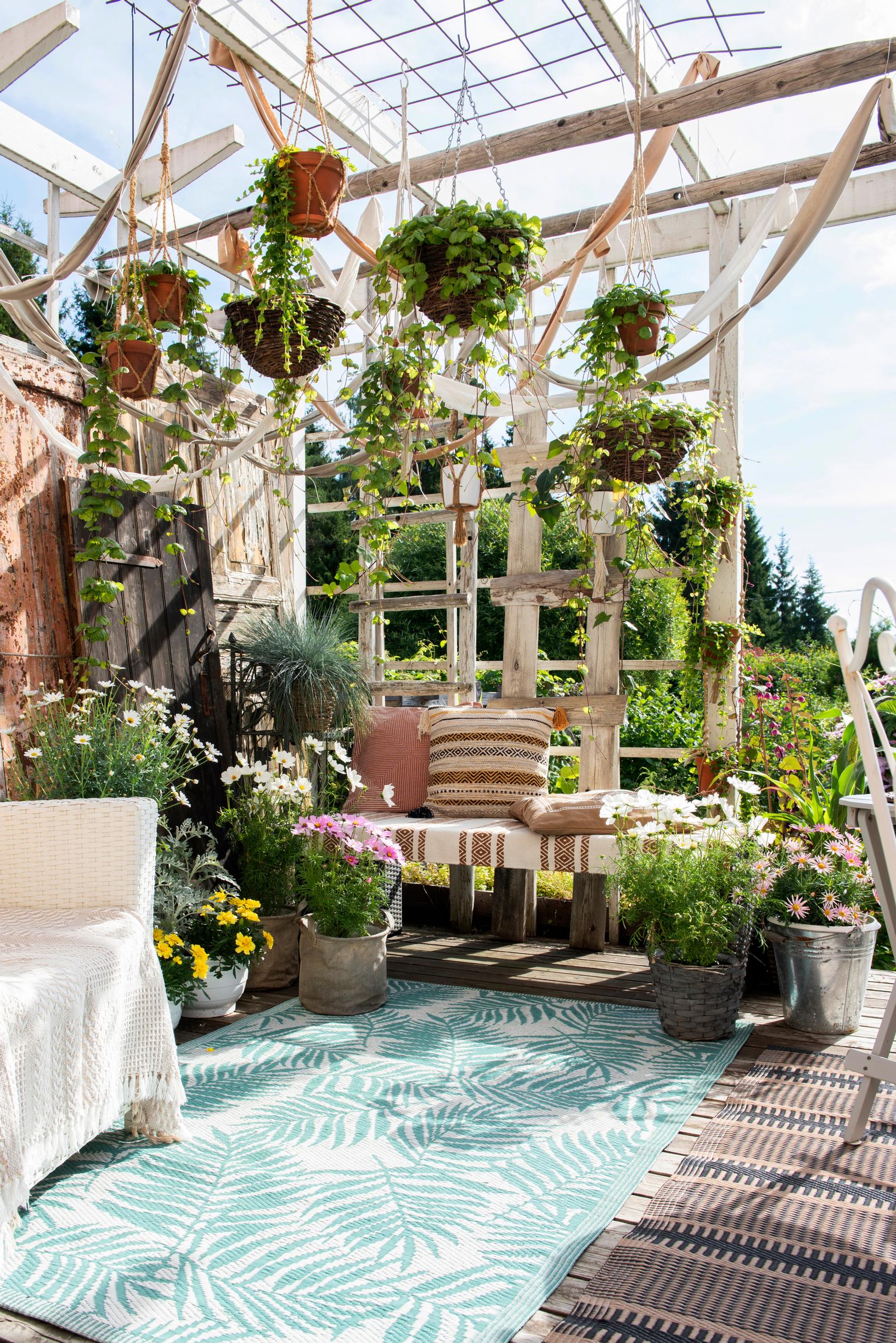
A sprawling labyrinth of creative grandiosity! Asta’s half-acre garden in Eastern Finland is built affordably and with recycled materials
Asta Parkkonen does everything in her garden on a grand scale yet casually. In this yard, there’s no fussy weeding or tension—just the gentle sound of the fountain and time spent in open-air rooms.
If butterflies made a sound, the garden would be alive with a symphony.
Even now, there are plenty of players in this orchestra: the gentle murmur of the fountain, the chirping of crickets, and the buzzing of insects. Asta Parkkonen’s garden is like an oasis in the desert—or, to be precise, in the midst of a quintessentially Finnish forest.
When Parkkonen’s family of five built their house 12 years ago, they laid the yard out with practical lawn. From the very first summer after they moved in, Asta has gradually replaced the grass with plantings, bit by bit.
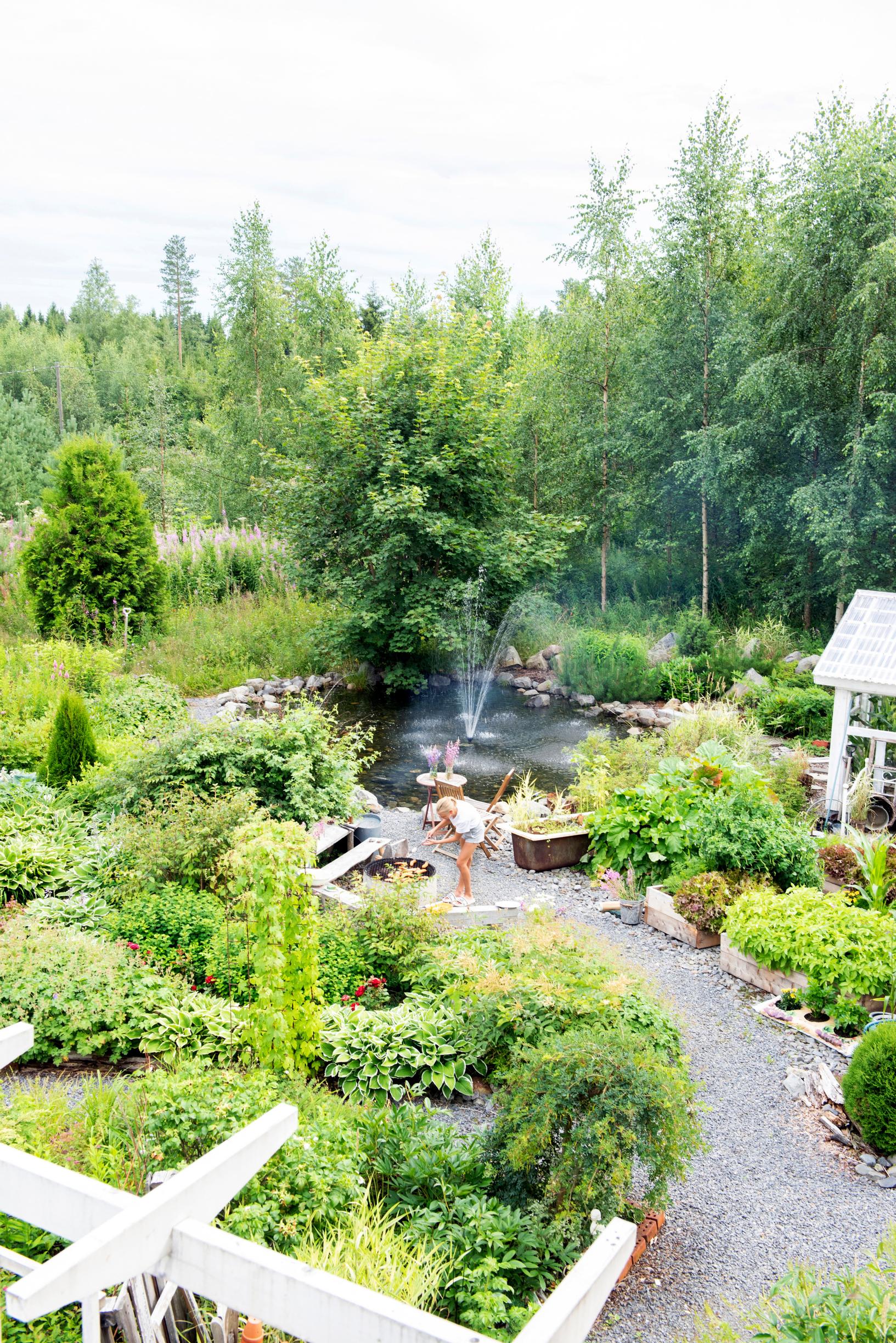
Now there’s not a trace of lawn left in the front yard. Instead, the garden overflows with plants and trees of varying heights, seating areas, pots, and decorative displays. Paths wind among them like a labyrinth. Every so often, the photographer and I lose each other and call out to find where the other is. It’s a true adventure!
In her garden, Asta indulges in a grandiose approach. There’s a lot of everything, and even though we’re in eastern Finland at Kitee’s latitude, the vegetation is lush. Even the peas and lettuces look almost like shrubs.
“This is my lifeline and way of life,” Asta says.
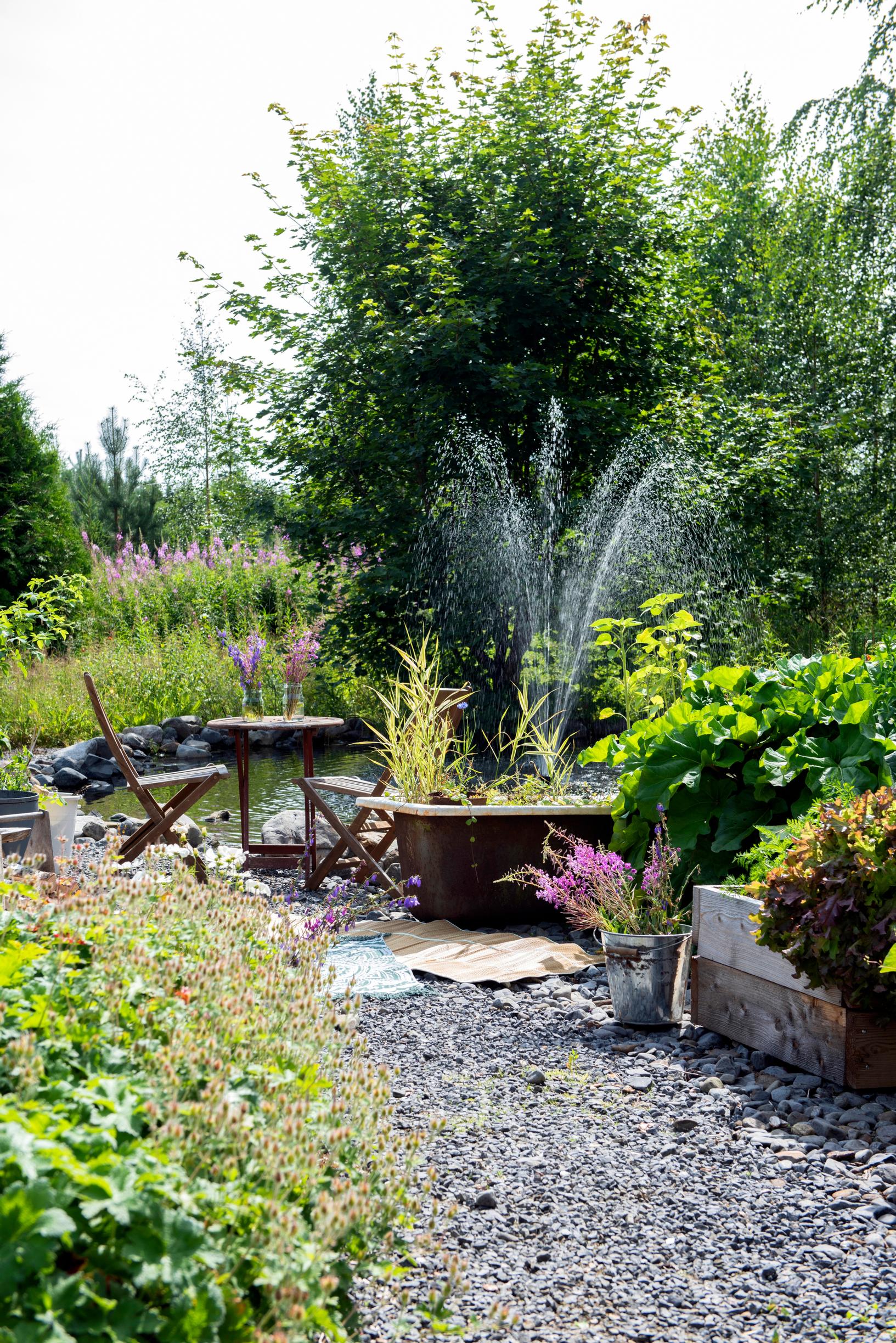
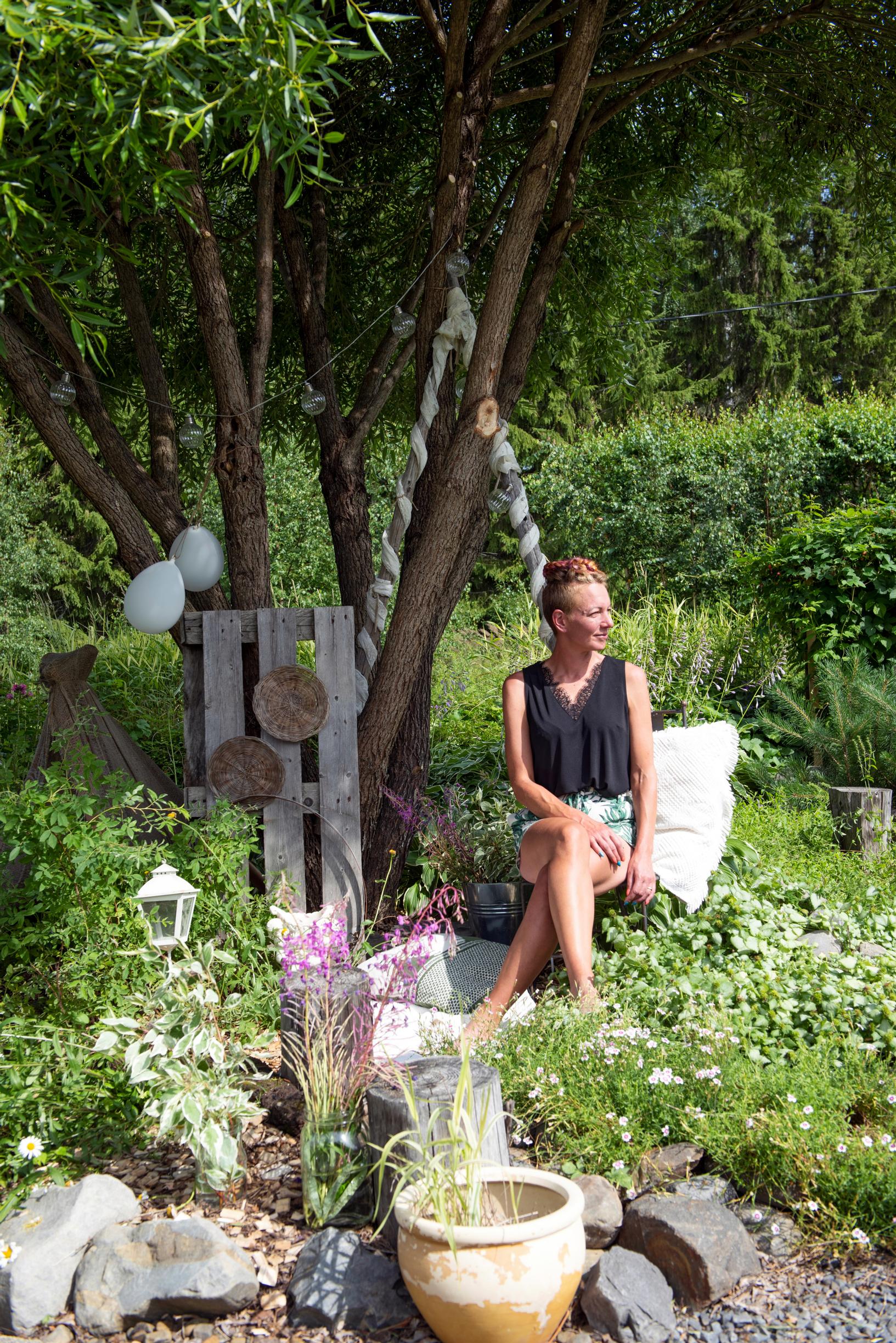
The abundance here wasn’t created with a big budget but through persistence, creativity, and dedication. Asta has received most of her plants as gifts, and she’s bought a few from flea markets. For now, new plant acquisitions are on hold. She’d sometimes like more, but the problem is they won’t fit anywhere, and she can’t bear to remove the old ones.
Only once did the garden’s size start to feel overwhelming. Asta felt she had lost control of her garden as the perennials spread dramatically. After struggling through one summer, she gave in.
“I realized you can’t manage this kind of mass, so I let it run wild. Brick and stone edges have disappeared under the plantings, and some of the paths have grown over. I won’t deny I love springtime, when everything is still small.”
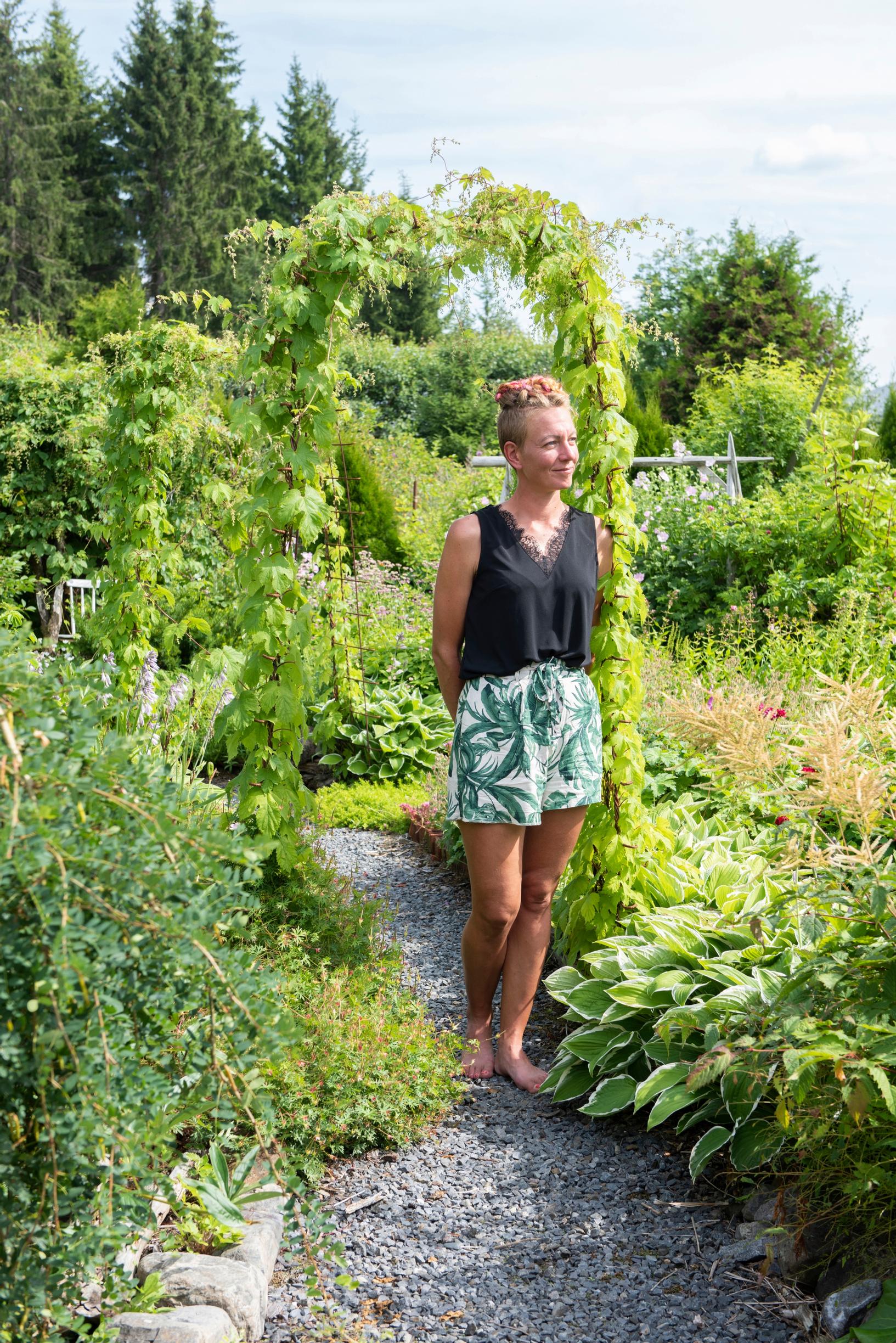
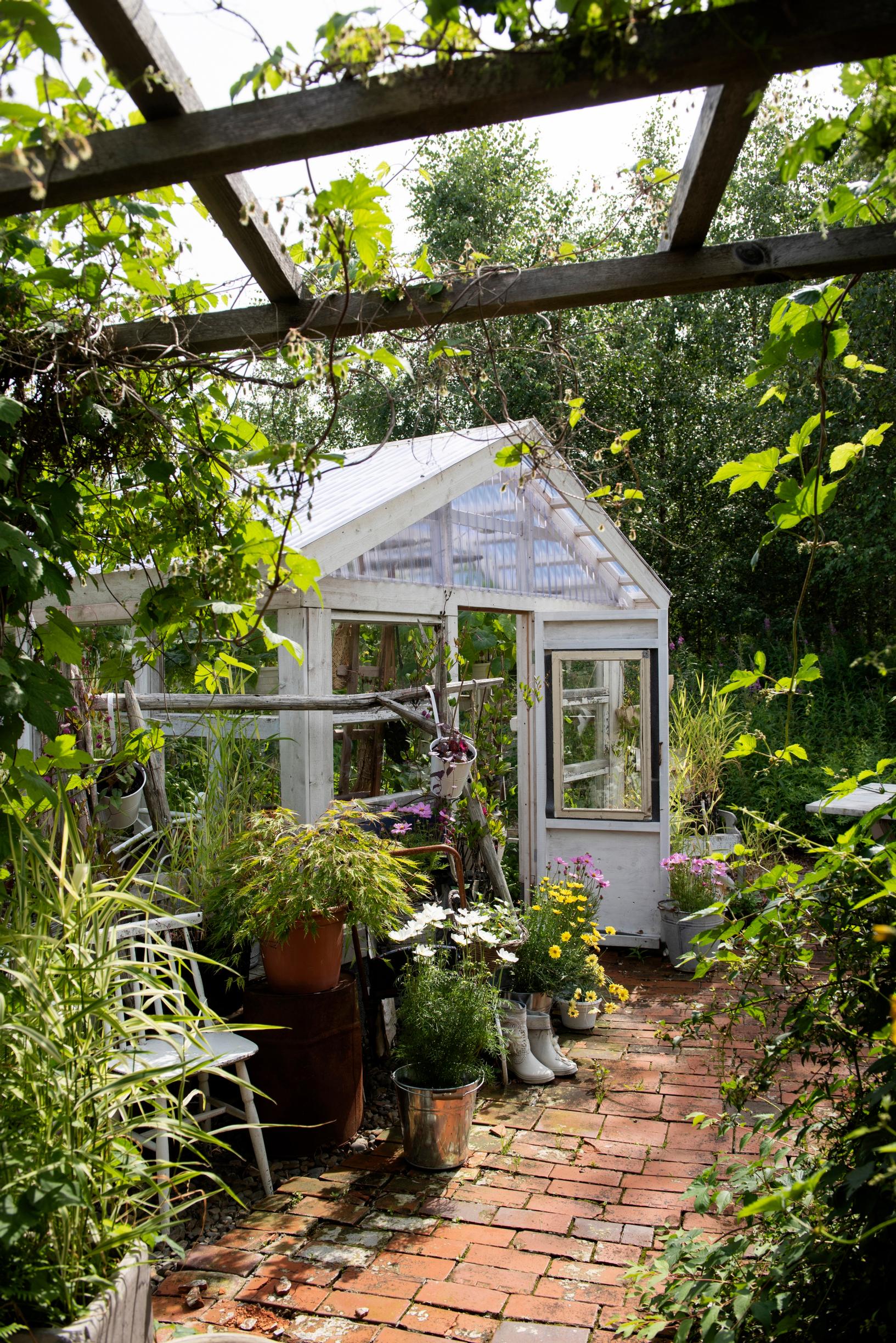
Abundance has been built through creativity and dedication.
She only weeds the garden a few times each summer. Asta focuses more on watering flowers and the vegetables in the greenhouse. A small army of watering cans sits on the steps.
“I don’t have time to bring as much water as the plants would need. Even the kids say I do nothing but water all summer.”
Luckily, Asta also remembers to admire her garden. Her favorite times are when the white mock-orange blooms in early summer, as well as the splendor of white and pink phlox and white panicle hydrangeas in late summer.
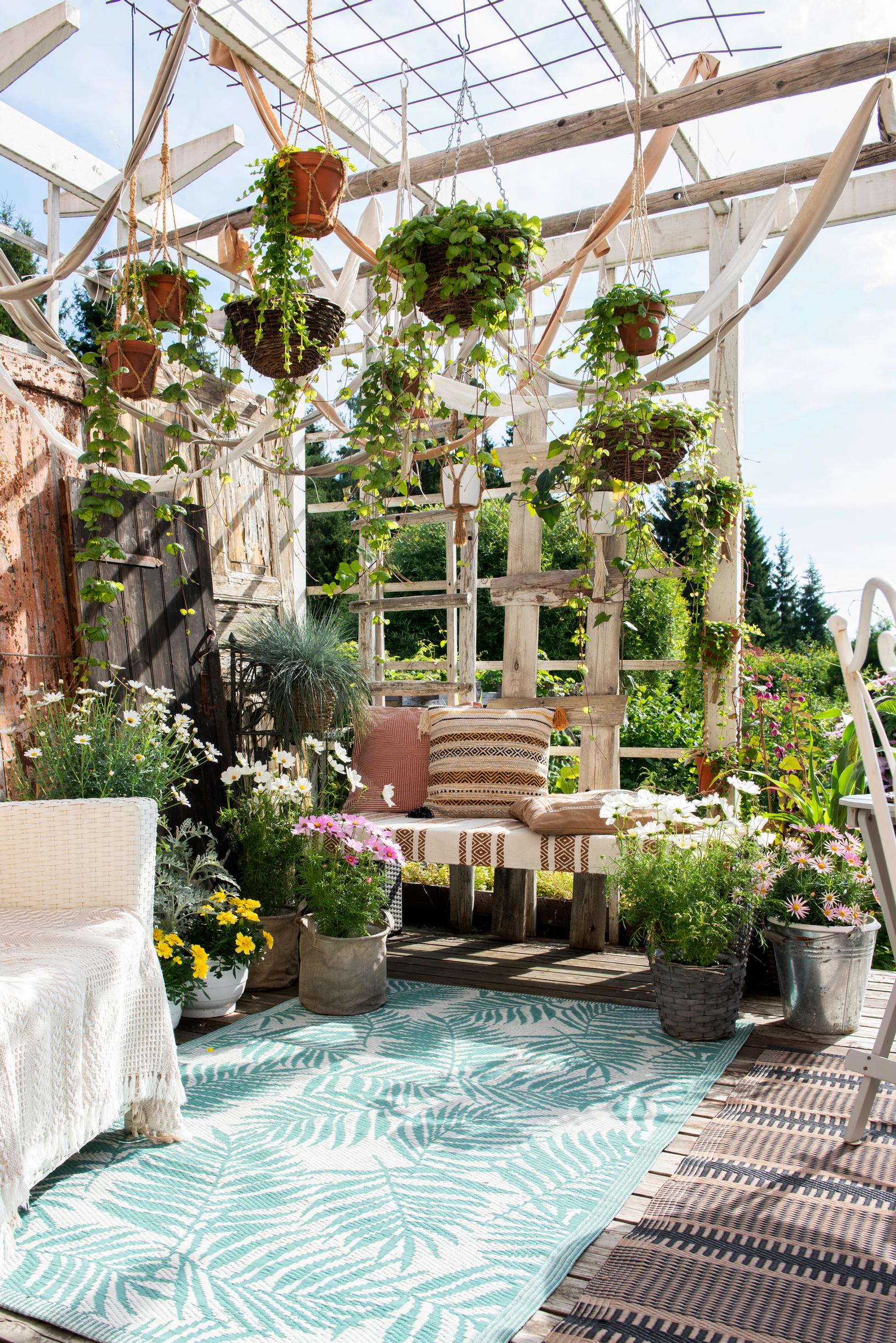
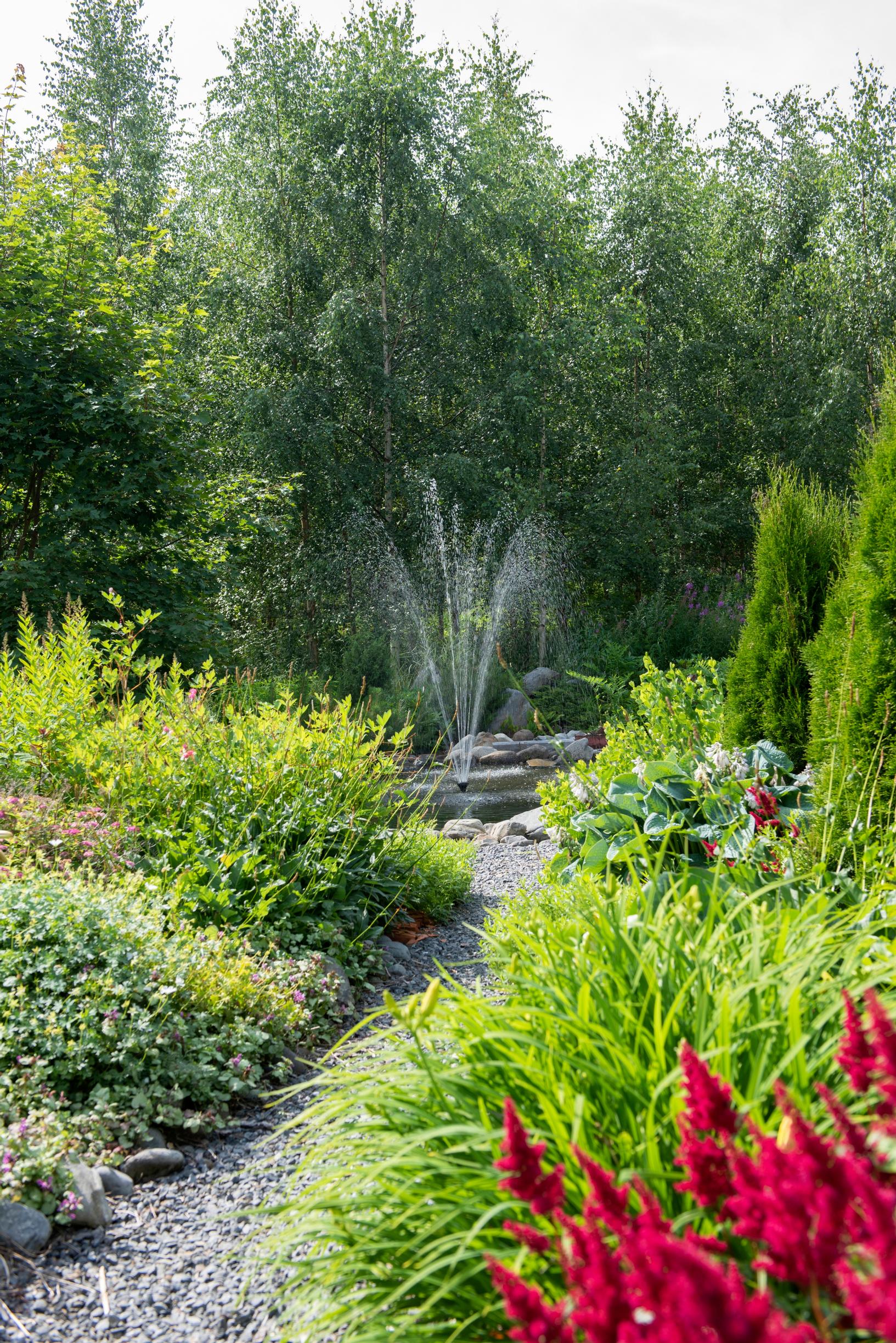
The family often dines outdoors, and the kids have learned to start a fire in the well-ring fireplace and grill meals for the family.
The fireplace and a small table for a few people have been placed by the charming pond. The garden pond was made about seven years ago. In spring, the whole family watches the frogs that gather there and marvels at the abundance of frogspawn. The fountain goes on every other hour, and when they’re on vacation, they track the time by the sound of the water or the silence.
For a bigger group, the food is served in the pergola next to the house. Hops climbing up the supports form walls, and a lattice roof and a tiled brick floor further separate it from the rest of the yard. There’s space under the pergola for a couch or benches, and a stack of pallets covered with a tablecloth serves as a table. The ceiling is hung with colorful string lights, lanterns, and balloons for decoration. Large pots showcase many striking summer flowers such as cosmos, gaillardia, and marigolds.
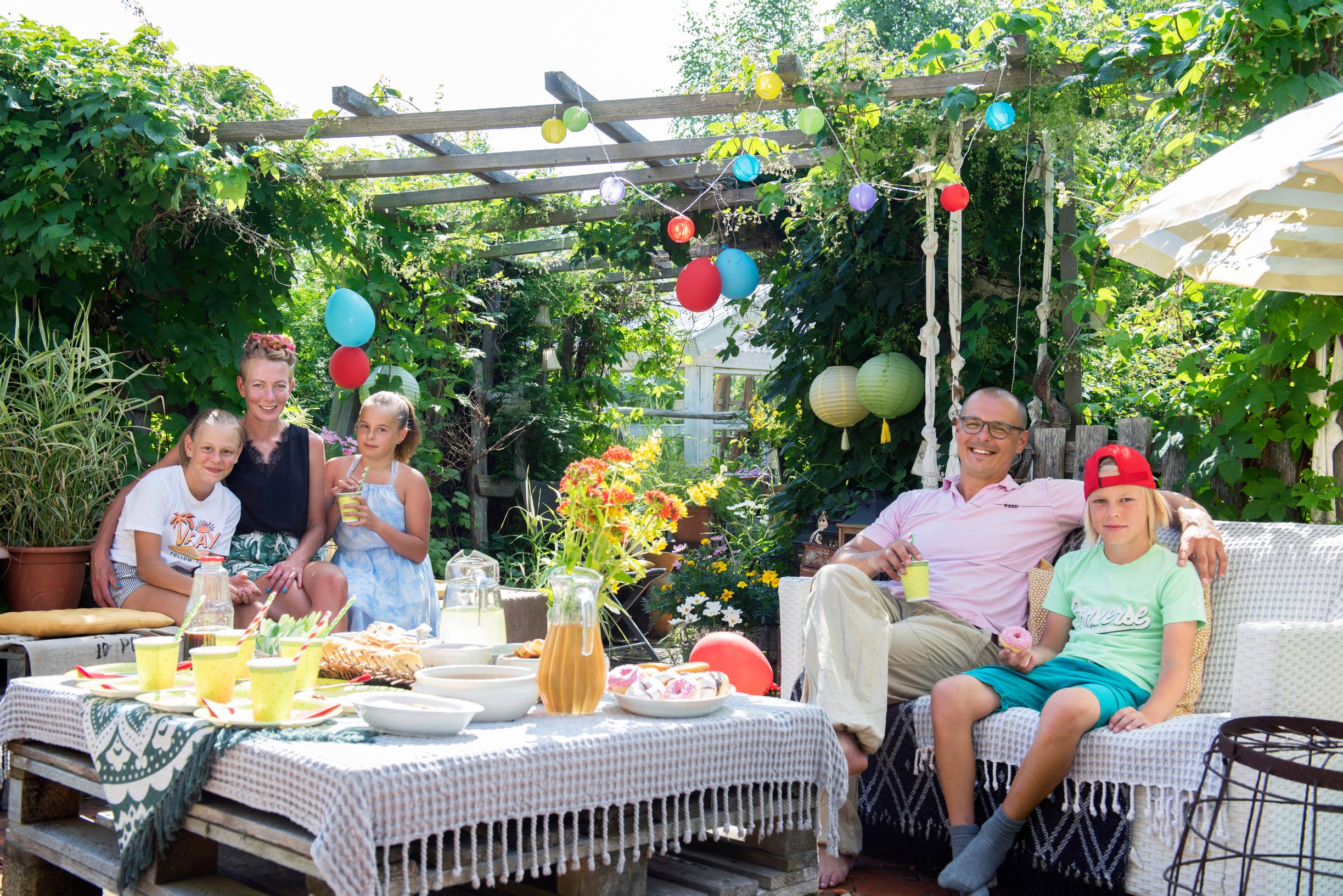
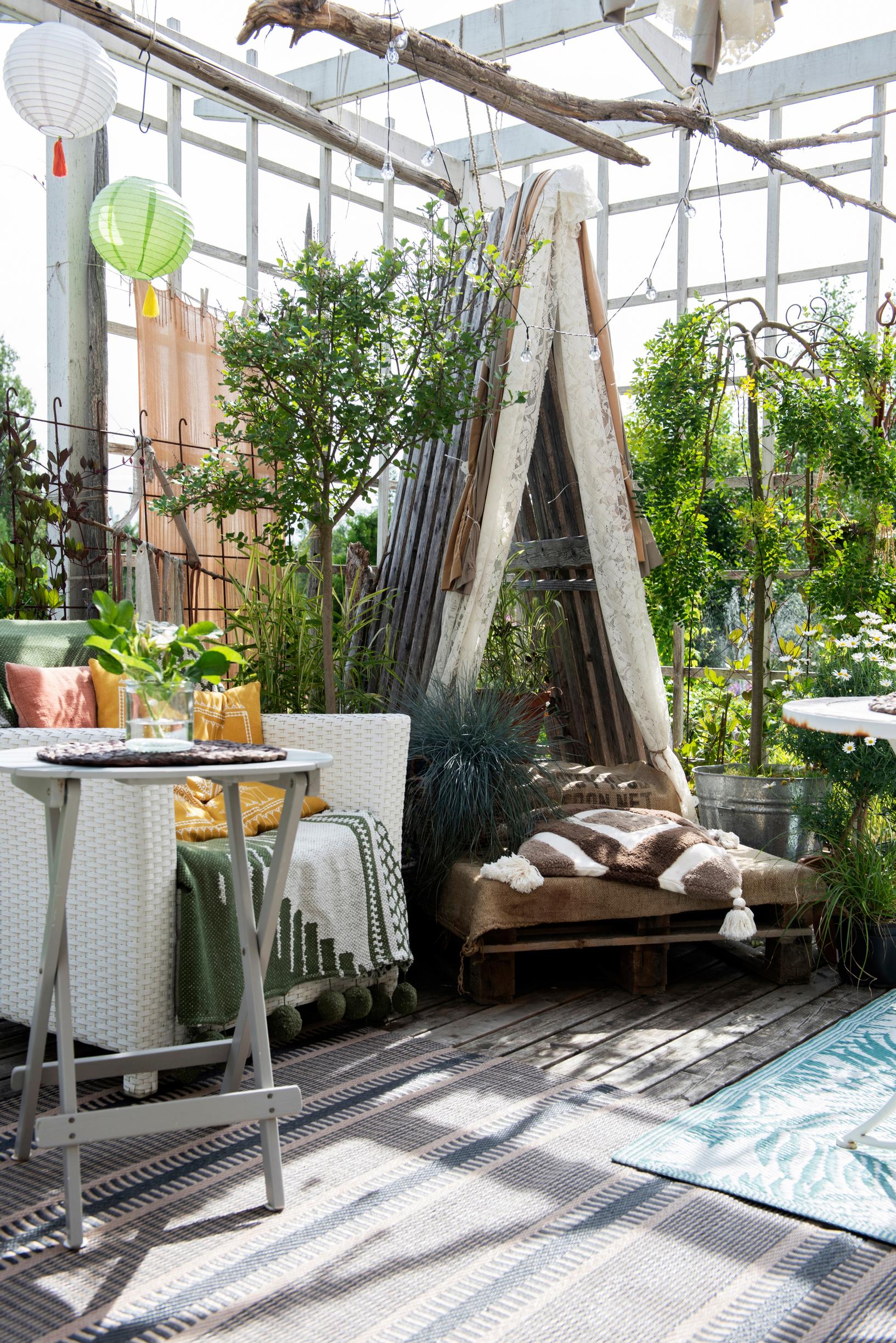
There are other seating areas around the yard too. You can pause for a moment under the weeping willow, for instance. Asta has put the most effort into making the terrace cozy. Rustic boards from an old compost bin have been added as walls, and there’s a lattice on the ceiling, similar to the pergola. On top of it, she placed reinforcement mesh that’s perfect for hanging planters and fabric vines.
They don’t have an outdoor kitchen—at least not yet—but by the raised beds, they’ve brought over a wooden cabinet for a kitchen corner that, with its peeling paint, is the epitome of shabby-chic romance. Asta describes herself as a “junk hoarder,” to whom all her relatives bring their unwanted items like old bike frames and paving stones.
Asta has invested the most in making the terrace cozy.
A mischievous jungle has slowly grown around the kitchen corner. This summer, the mini-vegetable patch has potatoes, carrots, peas, lettuces, and dill—some summers, something else. Asta doesn’t even want a traditional vegetable garden; the raised bed and greenhouse are plenty.
Asta no longer dreams of a bigger garden, but she’s eager to see what the yard will look like in five or ten years. By then, the differences in height will increase, as the trees get bigger. The current situation still feels like the beginning, since the fruit trees aren’t at full size yet. The conifers are also still growing, including thuja, columnar junipers, dwarf globe arborvitae, and Himalayan junipers.
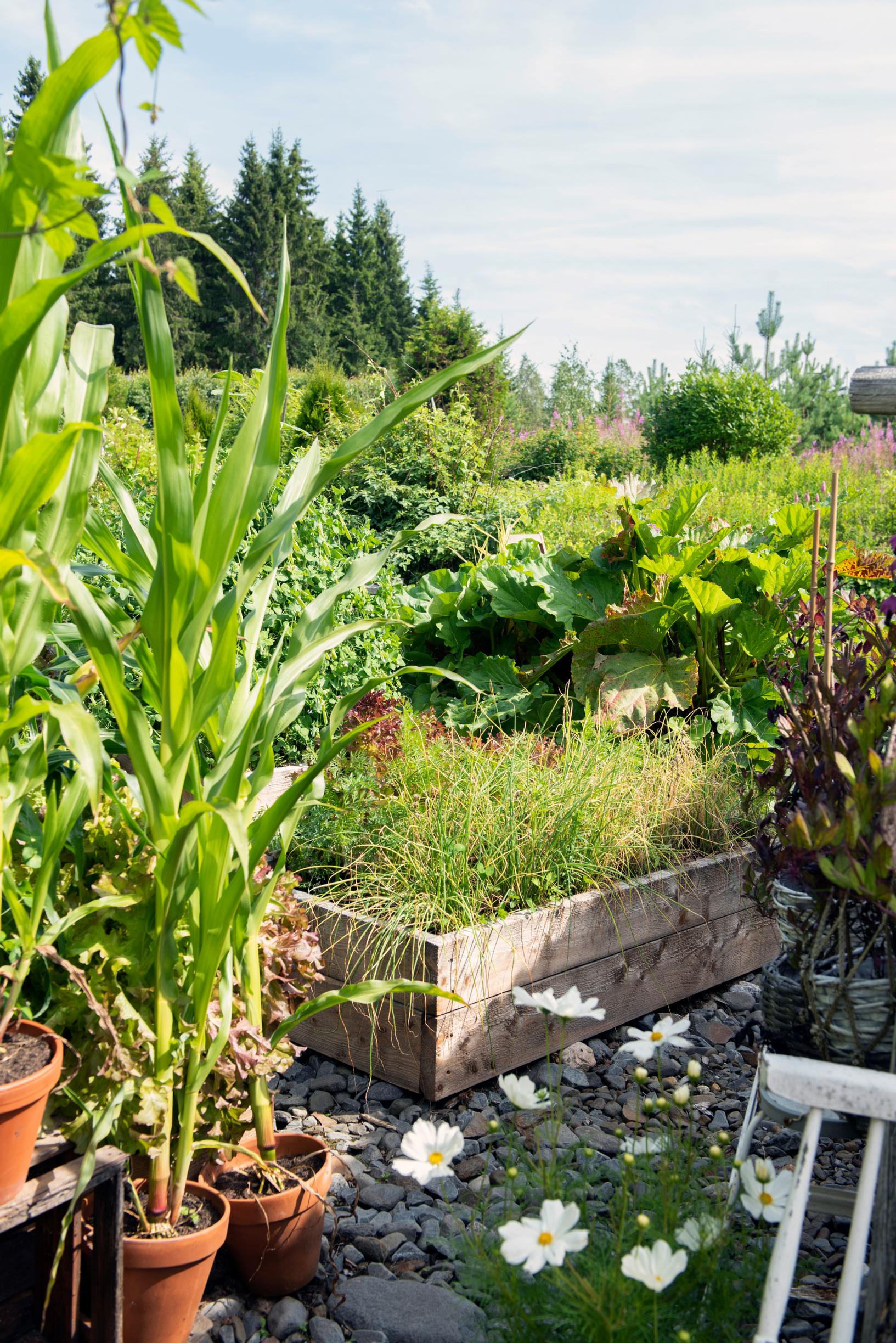
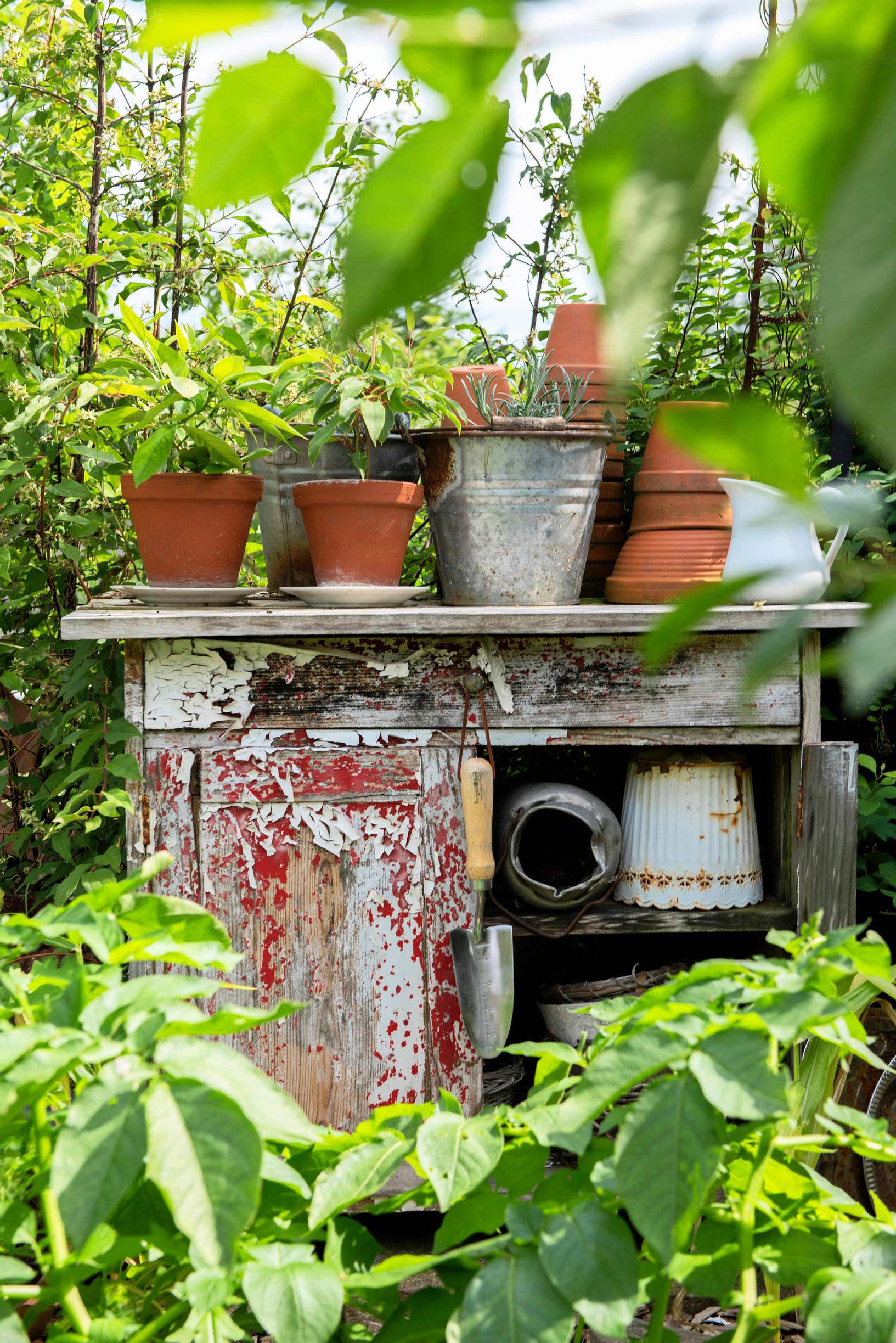
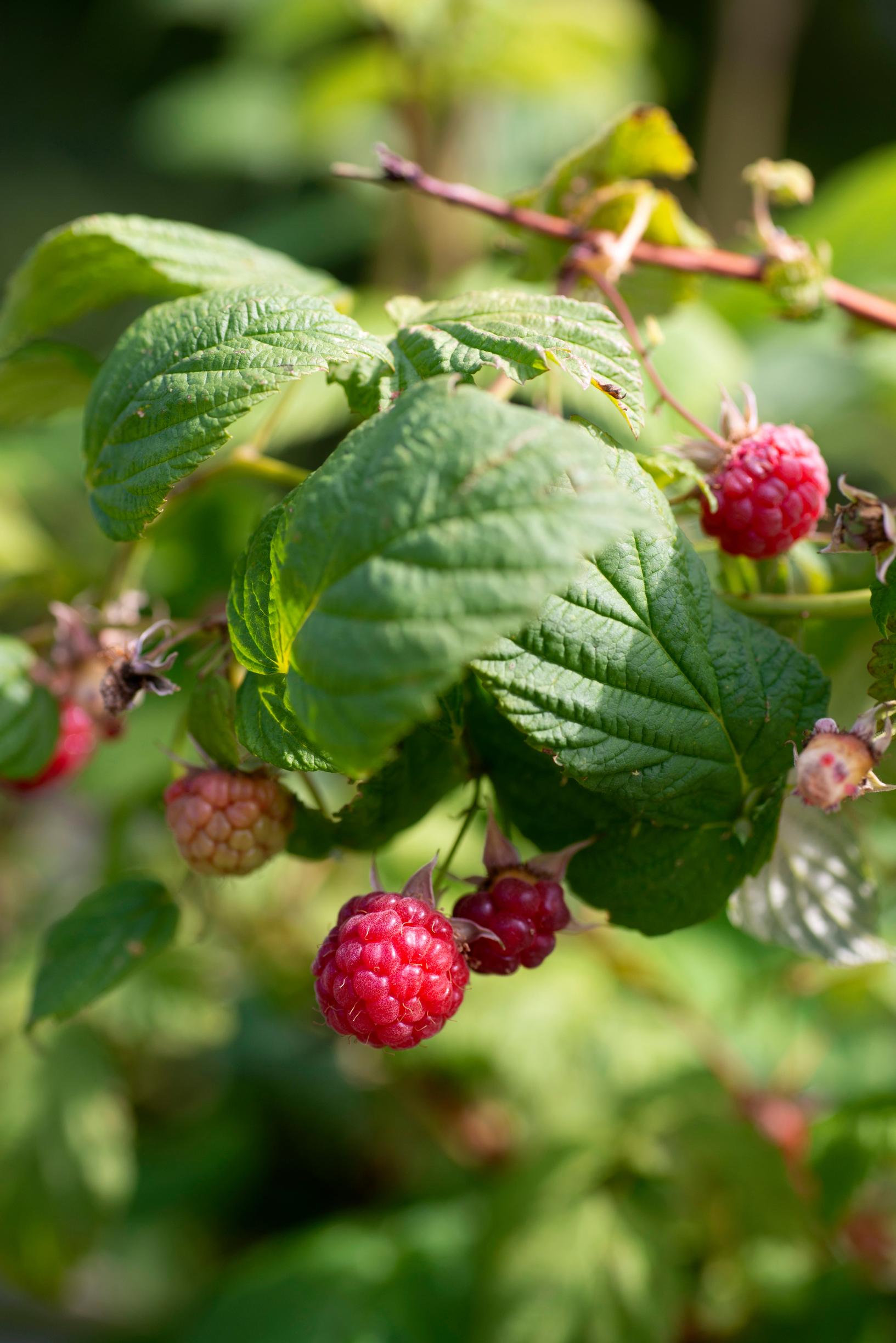
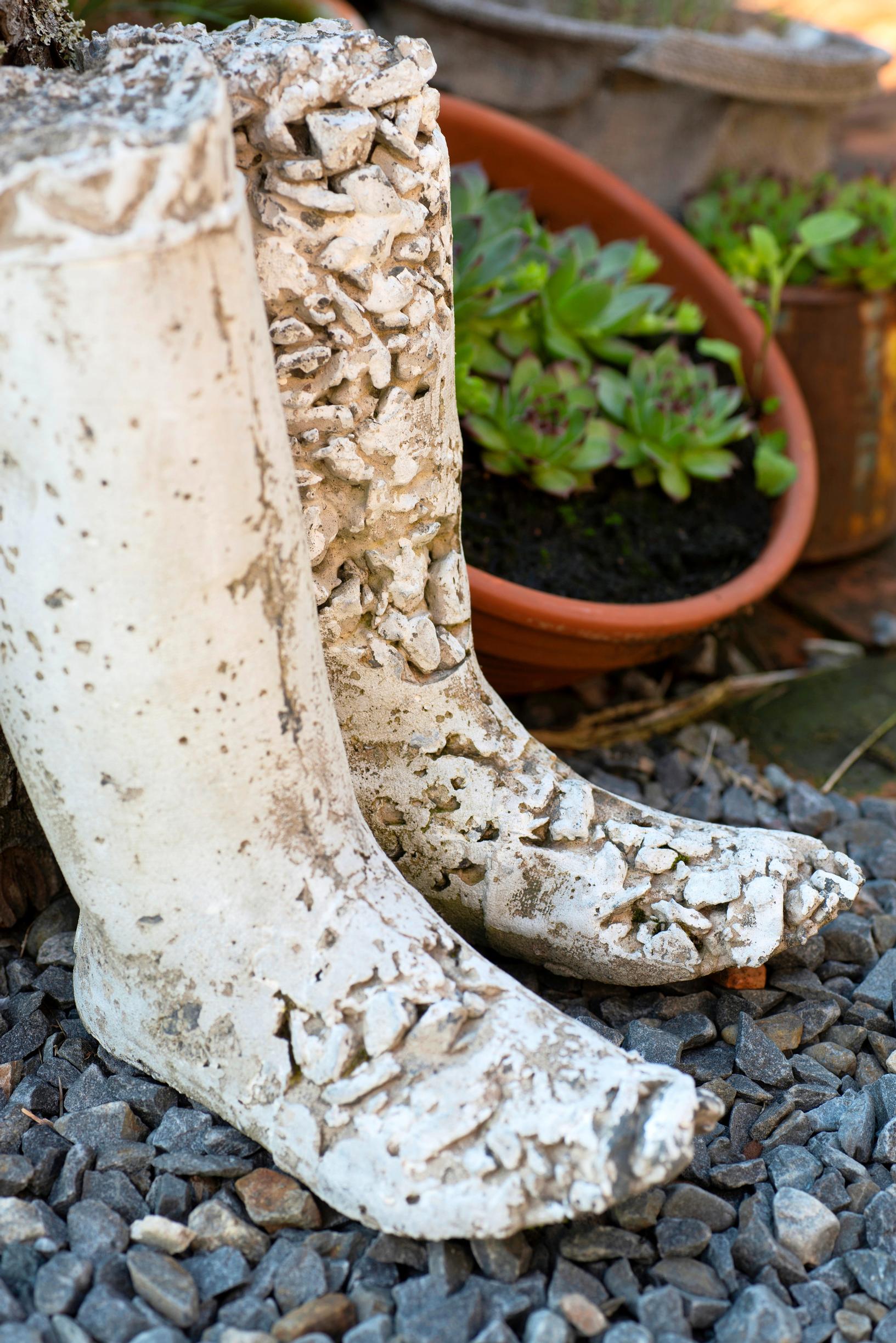
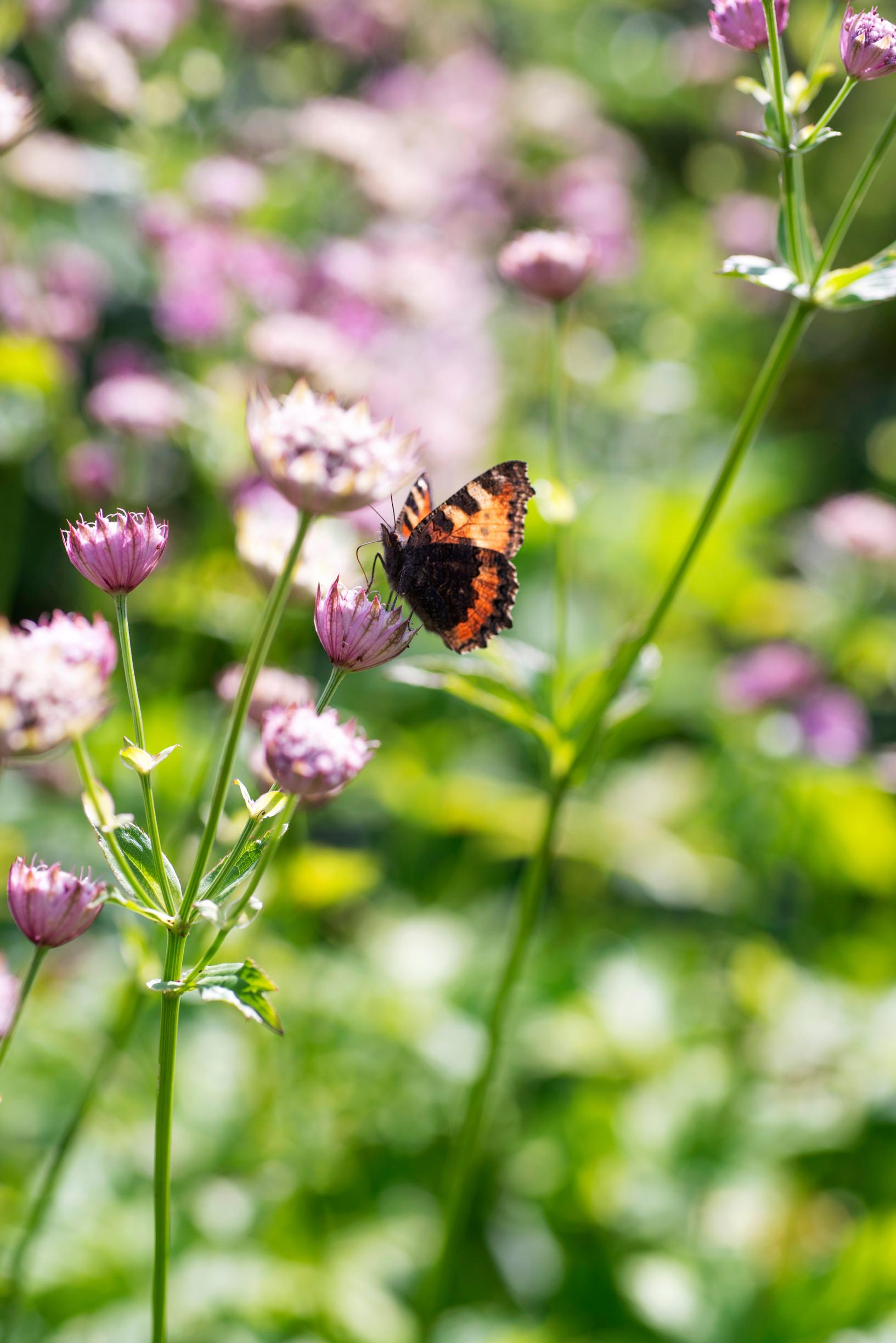
The yard used to be forested field, which may be why plants thrive so well here. When you dig into the soil, it’s teeming with earthworms. Asta doesn’t fertilize the garden’s plants every year, only the summer flowers. She hasn’t paid attention to the soil’s pH or bought any special soil; instead, her perennials and conifers are all happily growing in the same soil.
“Many might assume that a more serious gardener lives here. It’s pretty funny, because I’m not! If something doesn’t thrive, it just doesn’t.”
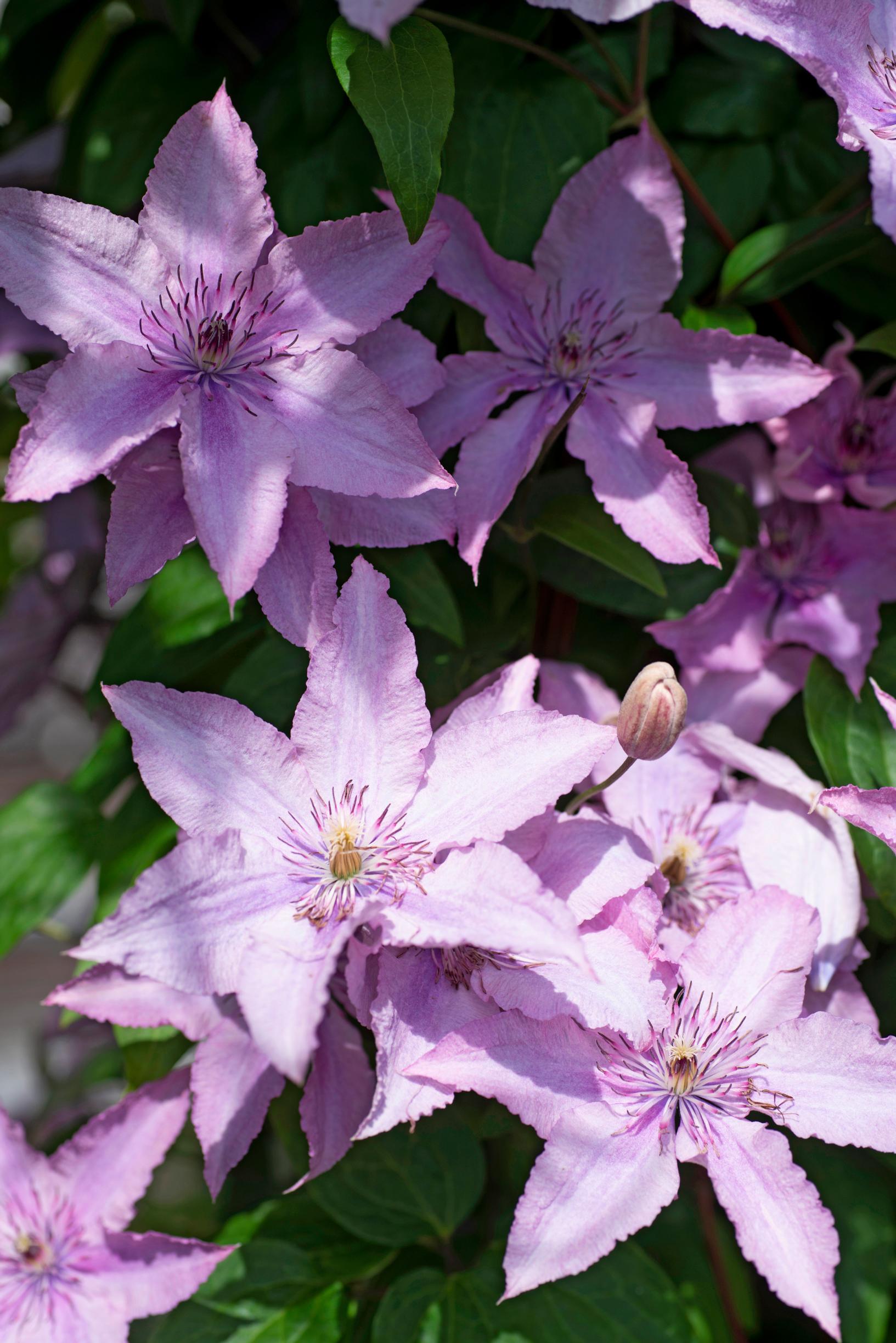
Asta’s tips for a laid-back garden
Protect and cover
You can bring an indoor feel into the garden. Pallets can be used as floors and tables for seating areas, covered with rugs if you like. Textiles lend a homey vibe to the garden, although you do have to gather them up before it rains. Walls and roofs make garden spaces feel cozier.
Hide the lawn
Your yard becomes more like a garden when you gradually replace lawn areas with plantings. You don’t necessarily need to dig up the lawn underneath; just leave it in place, cover it with a thick layer of newspaper, and add soil.
See your container with fresh eyes
Think creatively about flower pots. Anything can serve as a planter—like old shoes that are no longer in use. They add variety and a dash of humor. Instead of stones, you can also use cut logs to edge your plantings, and you can even plant ground covers or small succulents between them.
Keep an eye on the future
Give your garden time. Envision what it could look like years from now, and plant your trees and shrubs accordingly. Do a bit each summer, but don’t wear yourself out. Let your plants and flowers spread on their own.


